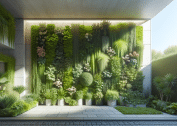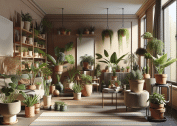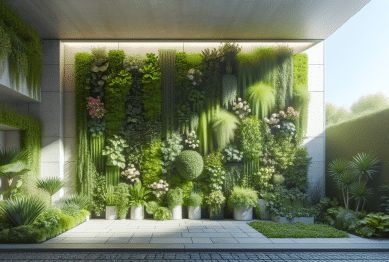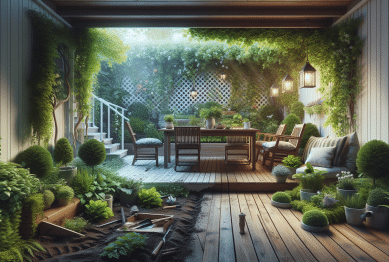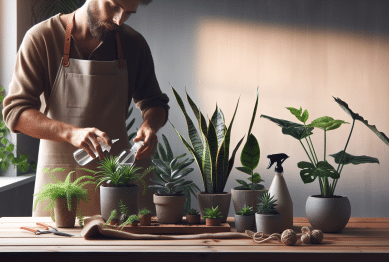Creating a home that feels warm, welcoming, and comforting has become a top priority for homeowners in 2025. Interior design trends that make homes feel cozier focus on natural textures, soft lighting, and personalized elements, transforming everyday spaces into relaxing retreats. In this article, we explore the latest trends and practical strategies to make your home feel inviting without compromising style or functionality.
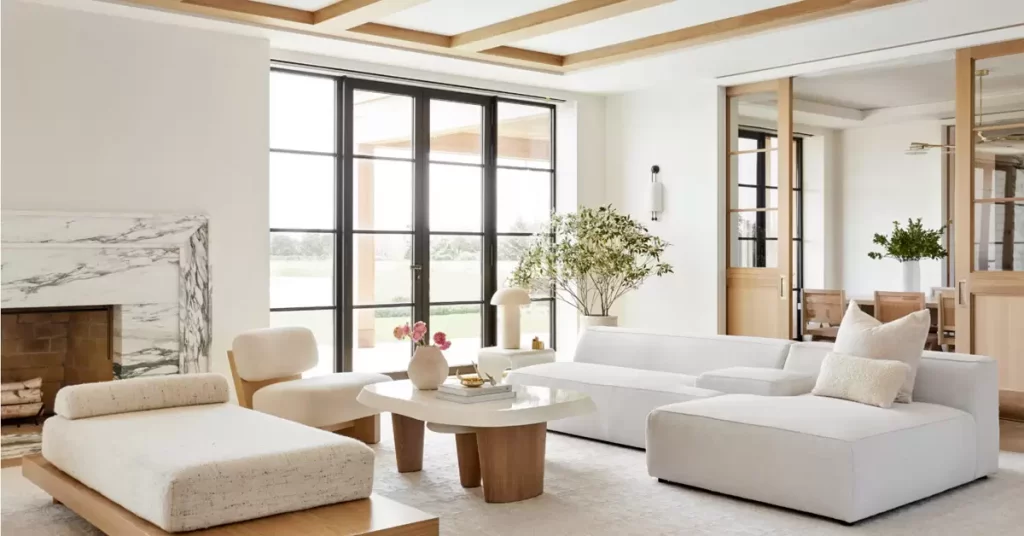
1. Warm, Natural Materials for a Grounded Feel
Natural materials have become a cornerstone of cozy interior design. Wood, cork, rattan, and stone create an earthy, grounded feel that makes spaces more comfortable. For example, oak furniture or bamboo flooring not only enhance aesthetics but also give rooms a tactile, organic appeal. According to Elle Decor (2023), homeowners increasingly choose natural materials to connect with nature and foster a calming environment.
Implementation Tips:
- Wooden Furniture: Incorporate oak or walnut coffee tables, bed frames, and shelving to add warmth.
- Stone Accents: Use stone countertops or fireplace surrounds for a grounded, tactile feel.
- Woven Elements: Add rattan chairs or wicker baskets to introduce texture and visual interest.
Layering these materials can also help create depth. For instance, a wool throw on a wooden chair or a cork-backed mirror can make a room feel cozy and curated.
2. Soft, Earthy Color Palettes
Color profoundly influences mood, and earthy tones are dominating interior design. Shades like terracotta, olive green, soft beige, and warm taupe create relaxing environments and promote feelings of comfort (House Beautiful, 2023). Unlike stark white or overly bright colors, these muted tones make rooms feel intimate and welcoming.
Practical Strategies:
- Walls: Paint your living or bedroom walls in muted terracotta or taupe for warmth.
- Accents: Use cushions, rugs, and curtains in complementary earthy tones.
- Layering Colors: Mix neutral bases with subtle color accents to avoid monotony.
Incorporating these colors into furniture and accessories allows you to balance style and coziness while making spaces feel inviting without feeling cluttered.
3. Layered Textures and Fabrics
Texture is a key element in cozy interiors. Mixing fabrics and surfaces creates depth and visual interest, making rooms feel warm and tactile. Plush rugs, velvet cushions, knitted throws, and linen curtains are highly effective for adding comfort.
Practical Tip:
- Combine different textures—pair a velvet sofa with a chunky knit throw and a soft wool rug.
- Mix smooth surfaces like leather with rougher textures like jute for contrast.
- Rotate textiles seasonally to adapt your home to changing climates while maintaining comfort.
Architectural Digest (2023) notes that multi-textured interiors not only enhance aesthetics but also invite touch and interaction, a subtle factor in creating a cozy home.
4. Ambient Lighting That Enhances Comfort
Lighting sets the mood in any room. Warm, soft lighting has emerged as a major trend in cozy home design. LED string lights, dimmable lamps, and candles provide a gentle glow that encourages relaxation and comfort (Architectural Digest, 2023).
Practical Strategies:
- Avoid harsh overhead lighting; instead, layer multiple light sources.
- Use floor lamps and table lamps in corners to create intimate zones.
- Incorporate warm bulbs (2700K–3000K) to evoke a natural, comforting light.
Ambient lighting also enhances the textures, colors, and natural materials in a room, making the entire space feel more cohesive and welcoming.
5. Personalized Spaces and Sentimental Decor
Interior design trends that make homes feel cozier emphasize personalization. Incorporating items with emotional or aesthetic value makes a house feel lived-in and comforting. This trend favors personal expression over minimalistic perfection.
Implementation Ideas:
- Photo Walls: Dedicate a wall to framed family photos or travel memories.
- Heirloom Pieces: Display inherited furniture or décor to create a sense of history.
- Artisanal Items: Handmade ceramics, quilts, or paintings add personality and warmth.
These personalized touches enhance the connection between residents and their home, making each room feel intentional and comforting.
6. Indoor Plants for Biophilic Design
Biophilic design, or integrating nature into interiors, is increasingly popular for cozy homes. Indoor plants improve air quality and create a calming visual connection to the outdoors. According to Better Homes & Gardens (2023), statement plants like fiddle leaf figs, monstera, and snake plants are trending for living spaces.
Tips for a Cozy Green Space:
- Group plants of different sizes and textures for visual variety.
- Use hanging planters or wall-mounted shelves to maximize vertical space.
- Pair plants with natural materials like wooden pots or terracotta containers to reinforce warmth.
Even small spaces can benefit from greenery. Plants not only add color but also produce subtle sounds and scents, contributing to a serene home environment.
7. Multifunctional and Flexible Furniture
Homes today need to be versatile, especially with the rise of remote work. Multifunctional furniture helps maximize space while maintaining comfort and style. Fold-out sofas, extendable tables, and storage benches are increasingly popular.
Practical Strategies:
- Storage Ottomans: Use them for seating and hidden storage simultaneously.
- Modular Sofas: Reconfigure seating for guests or family gatherings.
- Convertible Desks: Optimize small spaces for both work and leisure.
This approach ensures that spaces remain organized, functional, and cozy—an essential trend in modern home design.
8. Statement Rugs and Flooring
Rugs are no longer just functional; they are a design statement. Oversized rugs, layered patterns, and textured flooring add warmth and comfort to any room. Paired with natural wooden floors, rugs anchor furniture, define zones, and create a visually inviting environment.
Implementation Ideas:
- Select rugs with soft textures and earthy tones for warmth.
- Layer smaller rugs on top of larger neutral ones for depth.
- Coordinate rug patterns with existing furniture and textiles for a cohesive look.
Well-chosen rugs can also improve acoustics, making spaces feel quieter and more intimate—a subtle but important factor in creating cozy homes.
9. Curved Furniture and Organic Shapes
Another emerging trend in cozy interior design is the use of rounded furniture and organic shapes. Sofas, chairs, and tables with gentle curves promote a sense of safety and softness, breaking away from harsh lines.
Implementation Ideas:
- Opt for a rounded sofa or armchair in the living room.
- Incorporate circular coffee tables or side tables to complement angular furniture.
- Use curved mirrors or shelving for visual flow.
These shapes naturally guide movement within a room and create a softer, more inviting atmosphere that feels lived-in rather than staged.
10. Textured Walls and Accent Surfaces
Adding texture to walls is gaining popularity for making spaces feel intimate. Techniques like shiplap, brick veneers, wallpaper, or textured plaster can transform plain walls into warm backdrops.
Practical Tip:
- Use textured wallpapers in neutral shades to add depth.
- Incorporate a stone or brick accent wall in living rooms or bedrooms.
- Combine textured walls with layered lighting to enhance visual warmth.
Textured walls act as silent contributors to a cozy aesthetic, making rooms feel thoughtfully designed and tactile.
11. Seasonal Updates for Continuous Comfort
A truly cozy home adapts to the seasons. Interior design trends now emphasize small, manageable updates to maintain warmth and comfort year-round.
Implementation Ideas:
- Winter: Add heavier throws, wool rugs, and warm lighting.
- Spring: Introduce fresh floral arrangements and light fabrics.
- Fall: Use pumpkin or rust-toned cushions and natural elements like pinecones.
These seasonal tweaks keep interiors dynamic while reinforcing the feeling of comfort and care.
Conclusion
Interior design trends that make homes feel cozier are evolving to focus on warmth, personalization, and multifunctional living. From natural materials and earthy tones to layered textures and ambient lighting, every element contributes to a space that is both aesthetically pleasing and emotionally comforting. By integrating indoor plants, flexible furniture, textured surfaces, and seasonal updates, homeowners can create a sanctuary that encourages relaxation, creativity, and connection.
The rise of these trends reflects a growing desire for homes that are not just visually appealing but emotionally resonant—a place where style and comfort coexist seamlessly.
References
- Architectural Digest. (2023). Lighting trends that enhance comfort in homes. Available at: https://www.architecturaldigest.com (Accessed: 21 August 2025).
- Better Homes & Gardens. (2023). The rise of indoor plants in home design. Available at: https://www.bhg.com (Accessed: 21 August 2025).
- House Beautiful. (2023). Warm color palettes for cozy homes. Available at: https://www.housebeautiful.com (Accessed: 21 August 2025).


